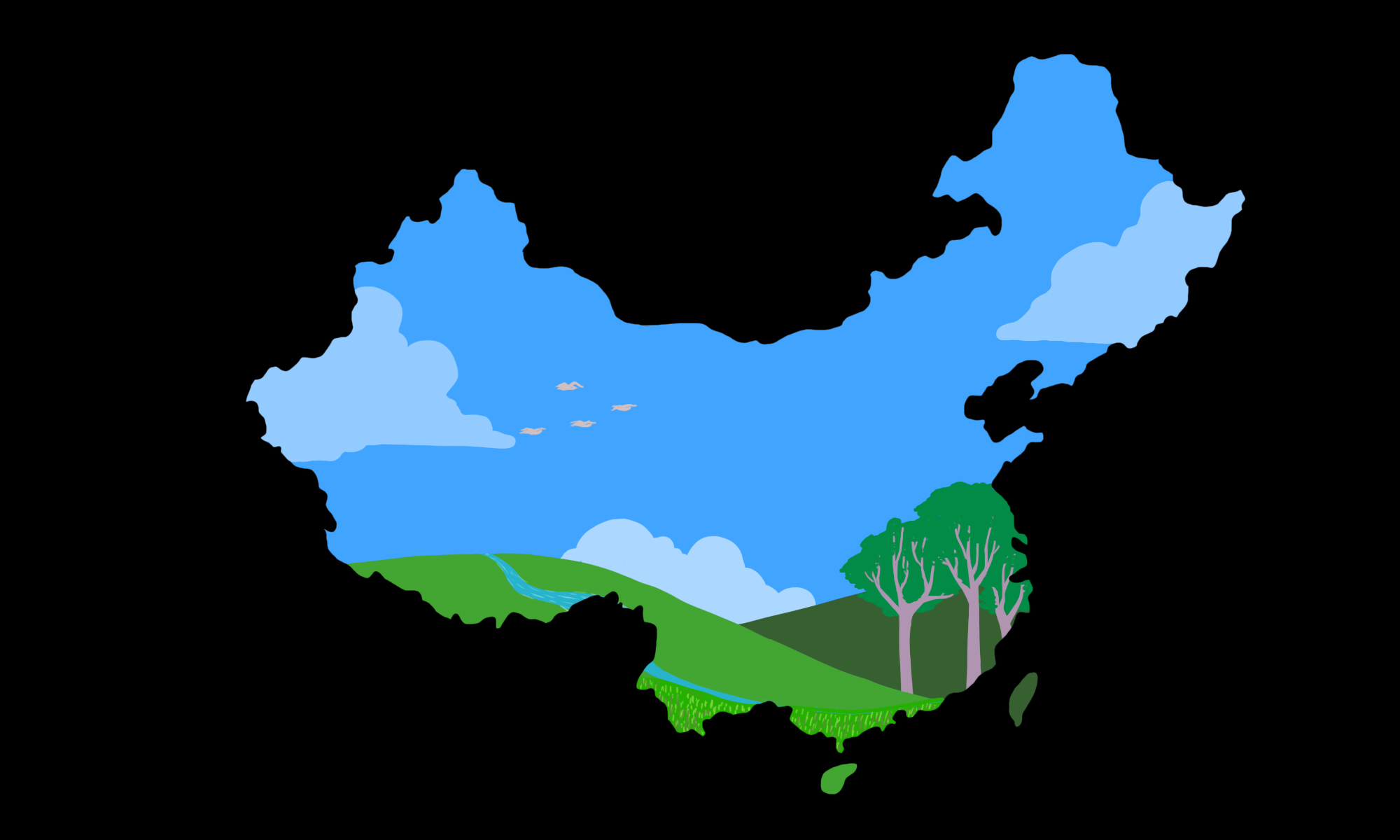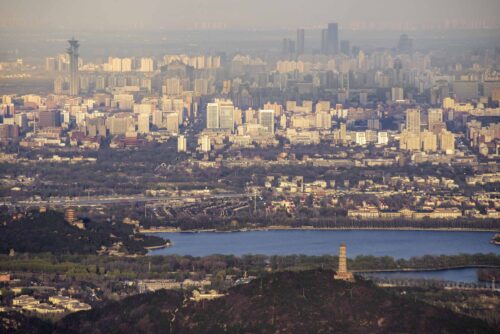China sets its sights on a green horizon
China is increasingly vocal about promoting environmental solutions to climate change. What are some of these “environmental solutions,” and how is the country doing?

Environmental health has always benefited human wellbeing. But in recent years, one benefit in particular has come to the fore: combating climate change.
While debates over how to mitigate climate change have typically focused on energy — how to decarbonize our energy supply and make processes and products more energy-efficient — land use could also play an important part of the solution. Land and ocean ecosystems can store a huge amount of carbon, contributing up to one third of the emissions reductions needed to keep global warming below 2 C. Conversely, cutting down trees, or converting land to large monoculture plantations, releases more carbon into the atmosphere.
Natural systems can also help societies adapt to a warming world. Planting trees can help keep urban areas cool. Healthy mangroves and coral reefs prevent coastlines from being battered by stormy winds. And vegetation helps prevent flooding by soaking up water as it falls.
Protecting and restoring natural ecosystems to help combat climate change is not new, but in the last few years, public interest in “natural climate solutions” has soared. Nature-based solutions were a key feature of the 2019 UN climate summit in New York. Climate activist Greta Thunberg has endorsed them. Even Donald Trump supported the call to plant a trillion trees at Davos earlier this year. These initiatives have proved so popular that some experts warn against their new buzzword-y status, arguing that companies and countries might prioritize tree-planting at the expense of other climate change measures.
How is China getting involved?
China has emerged as a particularly vocal proponent of natural climate solutions. In a position paper published ahead of the New York Climate Action Week in 2019, China’s Ministry of Ecology and Environment said it would “proactively promote” them for climate change among other countries. At that same summit, China and New Zealand co-founded the Nature-Based Solutions Coalition, an awareness-raising body under the UN. And as the host of the UN’s next large biodiversity conference, which will take place in Kunming, China is expected to push for the inclusion of nature-based solutions in a new international agreement.
In some ways, this is just a difference in wording. After all, integrating nature into socioeconomic policy is not news in China, a country whose top policymakers have been using the term “ecological civilization” since 2007 to promote a vision of more sustainable development. However, the new enthusiasm for framing such work using the internationally used “nature-based solutions” suggests a more concerted approach to tie together the environment and climate.
So what are China’s natural climate solutions?
Storing carbon
Forests, mangroves, grassland, and peatland can all play an important role in climate change mitigation, as a natural way to suck carbon out of the atmosphere and store it. By conserving, restoring, and managing land carefully, particularly forests, it is possible for countries to lower the concentration of carbon dioxide in the atmosphere.
China has been planting trees for decades: indeed, satellite data compiled by NASA in 2019 showed that China had contributed to “at least 25%” of the world’s increase in global green vegetation since 2000. But while reforestation previously focused largely on the need to restore degraded lands and control desertification, in recent years, restoring forests as carbon “sinks” has become a more dominant factor.
New initiatives clearly specify just how much carbon the new trees are likely to store: the project team behind a recent afforestation project in the coastal city of Shandong, for example, estimates that the trees and shrubs they plant will store some 12 million tons of carbon dioxide in the next 30 years. Meanwhile, reforestation in Horinger, a windswept county in Inner Mongolia, is expected to fix 220,000 tons of carbon over a 10-year period.
As well as storing carbon, these new reforestation projects are designed to help China adapt to a warming world. The Shandong project specifically aims to develop forests that are “resilient to the impacts of climate change,” using trees which can withstand a lot of salt: a necessity given the increased likelihood of coastal flooding in the area. In Horinger, according to locals, the new forests are already helping to reduce the number of debilitating sandstorms which used to sweep the area.
Soaking up water
“Sponge cities” provide another striking example of how China is using natural systems to combat climate change. Launched in 2015, the Sponge City Initiative invests in projects that aim to soak up floodwater. Landslides and flooding are already big problems across southern China, and climate change threatens to exacerbate their frequency and severity. Incorporating greenery into urban environments plays a big part in the sponge city concept. The government of Lingang, a planned special economic zone in Shanghai’s Pudong district, has already spent $119 million planting greenery on rooftops, building wetlands for rainwater storage, and constructing permeable roads that store runoff. In early 2016, Shanghai announced the construction of 4.3 million square feet of rooftop gardens throughout the entire city.
Protecting coastlines
In coastal areas, local governments are also investing in environmental protection for climate change adaptation. China’s conservation of the mangroves on its coastal wetlands contributes not only to climate change mitigation — mangroves store an impressive amount of carbon — but also protection of shorelines, which are buffered from more frequent storms. Since the first national mangrove reserve was established in the 1980s, China now has more than 50 protected areas, covering some 16,000 mangrove swamps.
Why is China so keen to promote natural climate solutions?
There are a number of possible reasons for China’s increased focus on nature’s role in climate change management. The first is that natural carbon sinks could play a genuinely important role in the country’s climate change plans. The initiative Nature4Climate estimates that, by protecting and restoring forests, peatland, and mangroves, China could mitigate over 1,000 metric tons of its carbon dioxide-equivalent each year. Such solutions will be even more critical in light of Xí Jìnpíng’s 习近平 ambitious new commitment for China to become carbon-neutral by 2060. According to Liú Yì 刘毅, a professor at China’s Academy of Sciences, natural carbon sinks will need to be used to reach the 2060 goal, in addition to decarbonization. While technologies for carbon and capture storage remain relatively untested, well-functioning ecosystems provide a low-cost alternative with a host of other benefits, including as a critical source of livelihoods for China’s many rural communities.
There could be another motive. Historically, environmental protection measures have often been undertaken to head off social instability, or in response to civilian unrest and environmental demonstrations. A recent article published in Yale 360 argued that by promising to create an “ecological civilization,” the government has been able to reassert control of the national environmental narrative — and legitimize the removal of civilian-led environmental movements in the process.
Branching out: the future of natural climate solutions
Will nature-based solutions play a leading role in China’s climate future? While it is unlikely that China, or any country, can get to net zero without some sort of natural carbon dioxide removal, there are important considerations. Experts worry that China’s tree-planting drive focuses too much on monocultures, which store less carbon. According to reports, in some areas natural forests are even being torn down to make way for new plantations. Sponge cities, too, are encountering issues through lack of local expertise and financial constraints, which put the onus to invest on already debt-ridden municipal governments.
Ultimately, the success of China’s net zero drive will depend on rapid decarbonization combined with a shift to a hydrogen economy. But there is also reason to believe that natural climate solutions will be a more important part of government policy moving forward. Climate considerations aside, ecosystem restoration and protection are critical to the health and livelihoods of millions of people. And in light of the myriad climate risks China is facing — from increased flooding and storms in the south to desertification in the north and west — it is not hard to understand why there is support for climate solutions which are available, scalable, and green.






